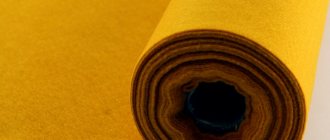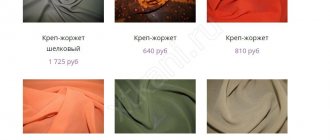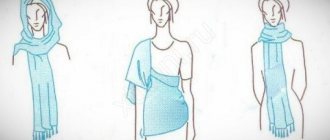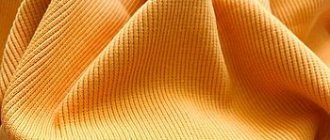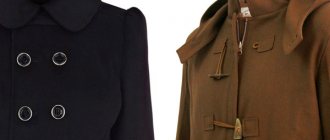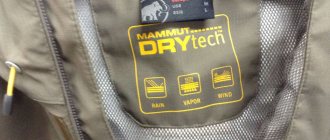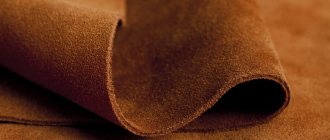Origin story
This dense and durable fabric has been known since the Middle Ages. It was used to make durable and inexpensive clothing for the poor. And for noble ladies, she sewed corsets and even shoes - fabric shoes. The second lesser-known name for this fabric is coutil, which is translated from French as “mattress”.
In Russia, this fabric was called “trapeza”: after the surname of the Zatrapeznov merchants, the founders of the linen manufactory in Yaroslavl at the beginning of the 18th century. It was used to make work suits and simple household items: rough shirts and trousers.
Where to learn modern weaving?
If you prefer to learn through masterclasses online, take Rachel Denbow's course on skillshare.com. Classes are held in English; a basic level is enough to understand this course: the master shows all the details of the process on video. Another good course is from Ellen Bruxvoort, she teaches how to work with miniatures. Subscription to skillshare.com is paid, but the site regularly runs promotions. You can buy 3 months for 99 cents or even study for free during the promotional period.
There are good collections of lessons on YouTube: check out the Heroic acorn channel, watch the Weaving for Beginners series of master classes from Creativebug Studios.
If you prefer to learn from live master classes, sign up for classes in Moscow: zelenaya_osnova, nitochki_weaving, loomy.sunday. And in St. Petersburg: novolovoloom.
During the classes they introduce you to weaving tools, teach you how to stretch the warp threads for a tapestry, explain the main types of weaving, teach you how to work with different materials and show you how to properly complete the work. After the workshop, you take the finished tapestry home. Typically such a master class lasts from 2.5 to 4 hours. The cost depends on the master, on average from 1300 to 3000 rubles.
Back Next
Fabric composition and its properties
Teak is still made only from natural threads - linen and cotton, sometimes hemp.
The fabric is produced in two weaving methods:
- Twill - with a characteristic diagonal hem. The front and back sides differ in design.
- Linen - with a flat and smooth surface without clearly defined front and back sides.
The fabric intended for making bed covers is additionally impregnated with special compounds to reduce permeability. After which the material becomes harder and more rustling.
This fabric has the following properties:
Density
Wear resistance
Durability
Hypoallergenic
Hygroscopicity
Varieties
Types of technical fabrics and their classification depend on the composition and purpose. They can be fireproof, filtering, thermal insulating. Often the same material is used for multiple functions. In this regard, the most complete classification can be obtained only on the basis of the composition of the material.
Basalt
Basalt fabrics are produced from twisted basalt threads, which are divided according to the type of weaving into plain, twill and satin. Rocks are used for production.
The material is characterized by the following properties:
- non-toxic;
- environmental friendliness;
- low degree of thermal conductivity;
- very high melting point;
- resistance to alkaline environments, decomposition, rotting, mold and mildew.
Due to its properties, fabric is often used in the construction industry as a thermal insulation material. It is relevant for manufacturers of thermal equipment and aircraft manufacturing.
Fabric can be intended as a reinforcing material, but this is only possible in cases where strength is needed but lightness is required. The heat resistance of basalt makes it possible to use the fabric as special curtains for welding; it is used to make protection for walls located near furnaces and boilers. Basalt material is suitable for the manufacture of wastewater and gas purification filters.
You may be interested in Description of cupro fabric: what does it mean in the composition of other materials
Basalt fabric
Silica
Silica fabrics are made from natural quartz. They can be satin or linen according to the type of weaving. The main properties of the material are:
- environmental friendliness;
- thermal and electrical insulation;
- resistance to acids and alkalis, ultraviolet rays, mold and fungi;
- The fabric can withstand temperatures above 1000 degrees for a long time. At the same time, all its properties will be preserved in full;
- The operating range of silica material is greater than that of basalt material.
The fabric is actively used for insulation from high temperatures, production of protective equipment against fires and radiation.
Silica material
Asbestos
Industrial fabrics made from asbestos threads are called asbestos fabric. This is a harsh, wear-resistant material with thermal insulation properties. The operating temperature reaches 500 degrees.
The material is used both in the industrial sector and in the manufacture of workwear. It is used to make cushioning cuffs and rings, membranes, and cushioning fabrics. When sewing workwear, it is added to protect against elevated temperatures. The main use of the fabric is in firefighter suits.
Asbestos fiber
Glass
Glass fiber is made from several types of filaments. They are resistant to moisture, acids and alkalis. When making special thin fiberglass, the production uses a coating using a special paraffin-based lubricant. Glass fiber is used for pipe insulation.
It is important to pay attention ! The downside is the low level of abrasion resistance. Because of this, during operation it is necessary to additionally protect the material with rubber fiber.
Fiberglass fabric in rolls
Polyester
Plain weave technology produces high-strength polyester fibers. Awnings are made from this fabric. The material is abrasion-resistant, durable, tear-resistant, and does not oxidize. It is used as artificial leather for the production of industrial filters.
Rags
One of the types of fabrics that, due to their soft properties and excellent absorbency, can be used in various fields is rags. It can be made of cotton or terry. Main purpose as a cleaning material. It absorbs oils, dirt, and paints well. The rags are suitable for use in auto repair shops as they are effectively used for cleaning mechanical parts.
You may be interested in Ready-made patterns and sewing of a cat bed with your own hands
One type of rag is considered to be netkol. This is a canvas intended for household and technical use. Most often it is used for wet cleaning and floor washing.
Using rags
Tarpaulin
Tarpaulin has found its use in various industries. The technical description for the fabric characterizes it as a water-repellent, fire-resistant material. The fabric may vary in density.
Most often, rubberized tarpaulin is used for sewing protective clothing, covering fabric, raincoats, mittens, and shoes. It consists of linen, synthetics and cotton, which are impregnated with special compounds.
Canvas
Nylon
Technical nylon fabric is durable and has a smooth surface. Nylon is made from synthetic polyamide fiber. There is production of transparent or milky fabric. In terms of properties, transparent fabric is considered the most durable. The strength of nylon is several times higher than that of silk.
The main properties are:
- tensile strength, the fiber does not tear, quickly returns to its original shape;
- products made from nylon fabric do not wrinkle;
- the material is very light;
- it is resistant to abrasion and deformation;
- does not deteriorate from bending or twisting;
- easy to care for.
Important ! The disadvantages include low light resistance and the ability to become electrified.
Nylon fabric is used to make curtains, clothing, and decorative items. There is technical cloth that is used in many industries.
Nylon fabric
Suede
Technical suede is intended for the manufacture of any type of shoes, leather haberdashery, and elements for musical instruments. Suede material is made from the skins of deer, goats, and sheep. Technical fabric in rolls is produced in accordance with the requirements of GOST. It has no lint and is great for polishing and wiping. Suede leaves no marks or scratches on the surface and absorbs moisture well.
Suede
Gauze
Gauze is known to many as a material used for medical purposes. The fabric is woven from low-fat cotton yarn.
Technical gauze has the following properties:
- transparency, lightness;
- environmental friendliness;
- possibility of sterilization;
- absence of impurities during production;
- hypoallergenic.
This may interest you Features of polyviscose: natural material or synthetic
Strict requirements apply to the production of gauze, since it comes into contact with open wounds. The canvases are subject to careful control. This is necessary to exclude the presence of dangerous chemical impurities in the fibers.
Technical gauze
Advantages and disadvantages
The fabric has the following advantages:
- environmental friendliness;
- high strength;
- holds its shape well;
- low creasing;
- durability;
- high breathability;
- hypoallergenic;
- small price.
There are also disadvantages:
- due to its high density, the fabric is difficult to sew and requires experience in working with it;
- has a high degree of moisture absorption. Therefore, teak products require regular drying.
How to decorate thin fabrics
The author of the article is Alina Khakimova. Summer is coming, which means it's time to sew tops, dresses, blouses, trousers, sundresses or even jackets and coats from chiffon, satin, crepe de Chine and other thin summer fabrics. One of the most difficult moments in working with thin fabrics is preparing the material for cutting.
Fabrics made from natural materials shrink. Therefore, before cutting the fabric, it is necessary to decate it.
Before decating, it is necessary to test fabric samples (minimum cut 15*15 cm). If the fabric reacts well to steam: it does not shrink, no traces of steam remain, the fabric does not stretch in different directions, you can iron the fabric using an iron with steam. It is better to decate thin sliding fabrics in one layer so that the fabric does not slip too much during ironing. In order for the fabric to shrink as much as possible, you can decate it 2 times.
If the iron + steam decating method is not suitable for you, the fabric needs to be washed. Before washing, the fabric also needs to be tested to ensure that the fabric does not shrink after washing or that there are no streaks left.
Some light and thin fabrics can be washed with powders when decating; you can simply soak the fabric in warm water.
It is recommended to wash all silk fabrics by hand in cool water (about 30 degrees) using special silk washing products (can be replaced with shampoo). During washing, do not rub or wring out the fabric. Some fabrics can simply be placed in cool water for a few hours.
Drying silk fabrics in the sun is not recommended; it is also not recommended near radiators. The fabric just needs to be laid out evenly on a sheet/towel on a flat surface.
Silk fabrics should be ironed without waiting for complete drying without steam in mode “1” or “2” depending on the properties of the fabric.
It is not recommended to partially moisten dry fabric or iron it through a damp cloth, since streaks or water stains may remain on the silk. If the fabric is completely dry, you need to completely wet it again and wait until it dries.
If you do not add vinegar when rinsing, the calcium contained in the water can “cement” wrinkles on the fabric, and they are then very difficult to iron or not ironed at all. If this does happen, then you just need to rinse the fabric in warm water and vinegar. If you washed the fabric in hot water and the silk “cooked”, the fabric will still have a “wrinkled” effect. It will no longer be possible to restore the fabric to its original appearance. But don't be upset! You can also sew from this fabric. And, even, it is necessary! Products made from crinkled fabrics are very popular now.
As you can see, there is nothing difficult about decating thin and slippery fabrics. The main thing is to follow all the rules. And we wish you manageable fabrics and easy sewing!
What standards are used in manufacturing
The fabric manufacturing standards are prescribed in “GOST 7701-93 Cotton and mixed teak”.
Namely:
- linear dimensions and surface density - according to GOST 3811;
- number of threads per 10 cm - according to GOST 3812;
- breaking load - according to GOST 3813;
- change in dimensions after wet processing - according to GOST 8710;
- resistance to abrasion along the plane - according to GOST 18976;
- degree of whiteness - according to GOST 18054;
- mass fraction of chemical fibers for mixed teaks and degree of mercerization - according to GOST 25617;
- color fastness - according to GOST 9733.0;
- air permeability - according to GOST 12088.
In terms of artistic and aesthetic indicators, finished teaks must correspond to standard samples approved in accordance with the requirements of GOST 15.007.
Secrets of two-layer weaving. How to weave on a tabletop loom with 2 reeds
Double layer weaving on a tabletop loom with 2 reeds.
In this video I want to talk about another possibility of a table loom with 2 reeds. It is known that on 2 reeds it is possible to make multi-hemp patterns, double-layer fabrics and double-width fabrics, although with some tricks. Unfortunately, if one reed corresponds to two healds, then two reeds almost never perform the functions of 4 healds, forcing, in some positions of the reeds, part of the warp threads to either be pulled into the upper part of the shed, or lowered into the lower part of the shed. In my classes, I always tried to determine the reason for the “curvature” of the multi-reed pattern and find the most effective way to adjust the shed on a machine with two reeds. Over the past few months, I have been unsuccessfully trying to find a convenient way to make two-layer fabrics on 2 reeds. I don’t have a multi-hemp loom, so I decided to repeat my own lessons on the jacquard pattern and double fabric in the hope of finding some patterns. In both cases, a two-layer threading was used, when dark warp threads alternate with light ones, while only light warp threads were threaded into the eyes of the first reed, and only dark warp threads were threaded into the eyes of the second reed. With this type of filling on a machine with two reeds, with the reeds in position 1v-2o ( in - upper, o - neutral), you can open two throats at the same time, a light throat on top, a dark one on the bottom.
And, if you lift (and remember) on the auxiliary board D the light warp threads tucked into the slots, with the reeds in position 1c-2c-D in both sheds, the warp threads will change places, those that were in the lower part of the shed will be at the top, and vice versa. Thus, by alternating these two positions of the reeds, using two wefts, each in its own shed, we can weave two parallel strips with a plain weave. I decided to check what would happen if both ducks were moved from throat to throat towards each other according to some pattern. A very neat double gap has formed.
It turned out that in this way it is possible, for example, to create two-color double-sided ornaments according to the pattern drawn up for the upper pharynx. The reverse side is generated automatically. Of course, each row of the pattern has to be typed 4 times (for each weft and each position of the reeds), but you can reproduce any two-color pattern that “fits” into the cells (patterns for cross stitch and jacquard knitting). I am sure that I was not the first to notice this possibility of a table loom with two reeds, but I hope that my experience outlined in the video will be useful to you.
I wish you pleasant viewing!
